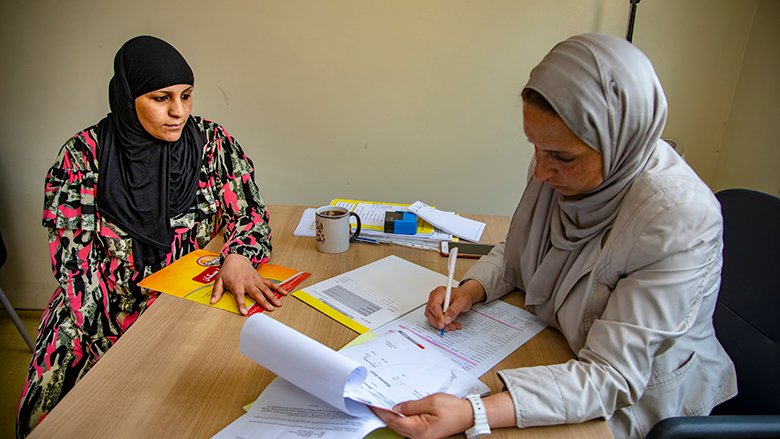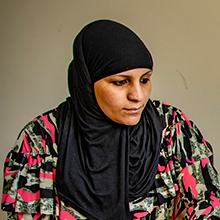As of 2015, Egypt had the highest rate of Hepatitis C in the world, reaching nearly 7% of the adult population. Hepatitis C patients were also five times more likely to fall into poverty as they would spend large amounts of money on treatments and were not able to work due to ill health.
To support Egypt, the World Bank modelled multiple scenarios of virus treatment vs. inaction to tackle Hepatitis C and to highlight the cost of inaction. After reviewing the scenarios, the government reached the conclusion that the most efficient option would be to eliminate Hepatitis C altogether, as the other options would be neither cost-effective nor conducive for population health in the long run. As a result, the "100 Million Healthy Lives" campaign was launched in 2018. The nationwide mass screening campaign was phased over 9 months. Five years onward, the campaign enabled Egypt to achieve the World Health Organization (WHO) golden certificate on the path to eliminate Hepatitis C.
This campaign was supported by US$250 million in financing from the World Bank, as a part of the US$530 million Transforming Egypt’s Health Systems project. The World Bank supported the campaign’s planning phase by sharing successful examples of other global health campaigns from which Egypt could benefit.
The success of the campaign is largely due to the fact that the screening and treatment processes were made accessible, inexpensive, and convenient for all citizens. The campaign had aimed to screen all Egyptians and residents nationwide who were above the age of 18 in three phases, each phase comprising 7 to 11 administrative governorates, utilizing almost 6,000 fixed testing sites and more than 8,000 mobile teams throughout the country. To reach the 57% of Egyptians who live in rural areas, 1,079 medically equipped vehicles were deployed to reach remote and underserved areas. A professional call center was set up for necessary follow ups and to respond to inquiries from citizens.
Egypt also capitalized on the campaign by also testing all participants for high blood pressure, blood sugar levels, and Body Mass Index. This helped to create a Non-Communicable Diseases database and heat maps for the adult population in the country. Further, the Egyptian Ministry of Health and Population developed an in-house dashboard that tracks the screening rates instantly with the ability to direct screening teams to move strategically to areas where screening rates were low. The dashboard also provided automated referral services to higher levels of care if any of the screened parameters were deemed out of range.
A large-scale awareness raising campaign comprised television and radio ads and recruited community health workers who personally reached out to residents of rural and underdeveloped areas to ensure that citizens all over the country knew of the campaign and were encouraged to benefit from it. Community health workers were sent to areas of mass-congregations like factories, mosques, churches, and public squares.
The mass media portion of the campaign focused on educating the public on Hepatitis C, reducing stigma associated with the virus diagnosis, and emphasizing the need to get tested. The key messages of the campaign were to encourage people not to use personal items that belong to others; emphasize that there is no harm in having contact with Hepatitis C patients; clarify that pills are safer than injections; encourage audiences to consult with a physician and test for Hepatitis C; and reassure audiences that treatment is available and effective.
These efforts were underpinned by the country’s ability to negotiate the procurement of screening and treatment supplies at the lowest prices, which in turn enabled the campaign to treat patients for free. Locally manufactured direct-acting antiviral treatments were a key factor in the campaign’s remarkable success – a 98.5% cure rate among people who received treatment. This served as a global public good by lowering the prices of medicines worldwide. Before Egypt’s campaign, the price of the 3-month regimen required to cure a person was in the range of US$900 for low-income countries and up to US$100,000 in high income countries. In Egypt, the price was only US$58!
"It felt very bad and unfair to be diagnosed with Hepatitis C at this young age," said 21-year-old Karim Saad, another Egyptian who benefitted from the campaign. "Years back my father was also diagnosed with Hepatitis C. He was aware of the symptoms, so when he saw me being too sleepy, he told me to do the screening. I never suspected I would have the virus because of my young age."
Karim also found the screening and automated referral to treatment process very easy and smooth. "I am now on my last days of dosage, which is more of a precautionary measure," he said with relief.
He said that his treatment process was a lot more convenient and cost-efficient than his father’s, who, according to Karim, spent a large amount of his income on treatment and was very worn out throughout the process.
Healthcare remains one of the World Bank’s top priorities for Egypt. The FY2023-27 Country Partnership Framework’s 2nd High Level Objective, titled Enhanced Human Capital Outcomes, is focused on projects and analytical work that support Egyptians in leading healthy and prosperous lives. Learn more about the projects and publications under this umbrella, such as the Transforming Egypt’s Healthcare System Project, the Universal Health Insurance Operation, and Egypt’s Viral Hepatitis Program-Burden and Response: An Economic Analysis report.

